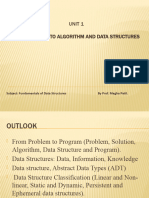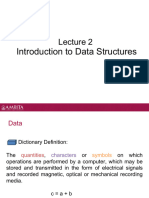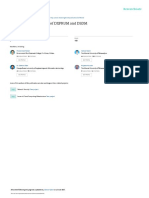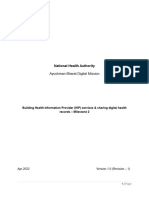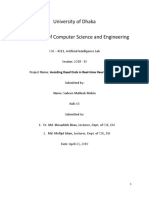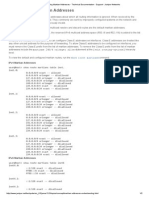0% found this document useful (0 votes)
60 views9 pagesL-1 Introduction To Data Structures
The document provides an introduction to data structures, defining data as raw facts and information as processed data with meaning. It classifies data structures into primitive, linear, and non-linear types, and discusses Abstract Data Types (ADT) as a model for data structures that focuses on operations and data types without implementation details. Reference books for further reading are also listed.
Uploaded by
adityapatidar1508Copyright
© © All Rights Reserved
We take content rights seriously. If you suspect this is your content, claim it here.
Available Formats
Download as PDF, TXT or read online on Scribd
0% found this document useful (0 votes)
60 views9 pagesL-1 Introduction To Data Structures
The document provides an introduction to data structures, defining data as raw facts and information as processed data with meaning. It classifies data structures into primitive, linear, and non-linear types, and discusses Abstract Data Types (ADT) as a model for data structures that focuses on operations and data types without implementation details. Reference books for further reading are also listed.
Uploaded by
adityapatidar1508Copyright
© © All Rights Reserved
We take content rights seriously. If you suspect this is your content, claim it here.
Available Formats
Download as PDF, TXT or read online on Scribd
/ 9

















































